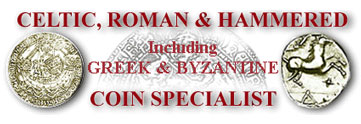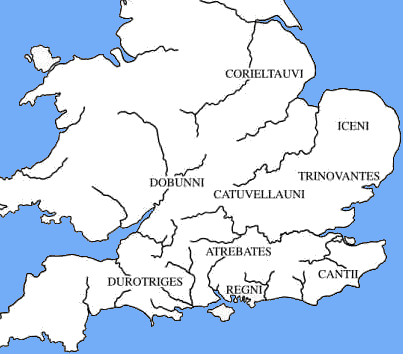A very brief historical introduction

Celtic coinage is the most intriguing and varied of all the British coins as no one knows specifically for whom, when or where they were produced. They were struck by hand in gold, silver and bronze and used for approximately 150 years. The earliest coins to circulate in Britain c150BC were made in Gaul and are known as Gallo-Belgic A-F. The (A) being derived from the Macedonian gold staters of Philip II (359-336B.C.)
Coins were brought to Britain by trade, as pay for returning mercenaries, by raiders and settlers from the Continent, and gifts between tribal leaders. The first British coins to be produced were the cast bronze "Thurrock Potins" c100BC. The production of gold coins started c70BC with the 'Westerham Stater' being the first distinctive British Stater.
From Julius Caesars expeditions to Britain in 55/54BC to the Claudian invasion in 43AD, southern Britain was increasingly influenced by the Romans. Latin legends began to appear for the first time. The first inscribed staters to appear were inscribed 'COMMIOS' possibly issued by Caesar's Commius.
Coinage still continued to be produced after the Roman invasion of 43AD. But in 61AD with the death of King Prasutagus and the suppression of the Boudiccan revolt that followed, Celtic coinage came to an end.


